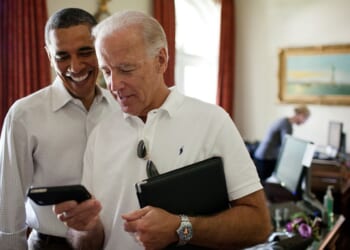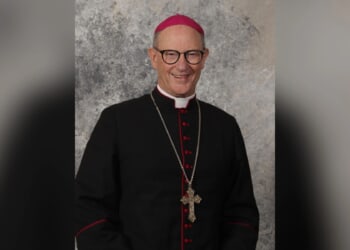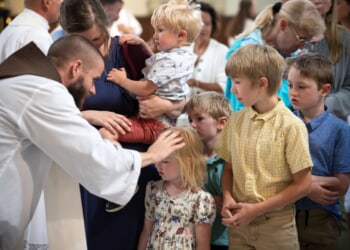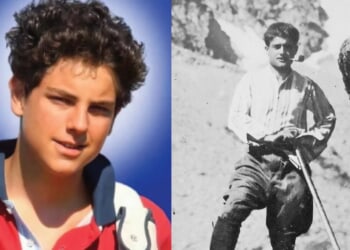It popped up on my Facebook feed, a postcard from America’s past.
It was from a spring evening at the ballpark, Candlestick Park in San Francisco, 32 years ago, April 13, a video from the Giants’ home season opener. Sunlight was fading, but not yet gone. The wind was blowing at Candlestick, as it nearly always was, and the temperature was in the mid-50s. Its opening day vibes — celebratory, full of hope — offers a new season and April’s unspoiled dreams. There’s an honor guard with flags on the field, giving focus to the anthem to come.
There is no look or feel of the degradation that would come to the City by the Bay. The hope of the new season seems part of a general ambience one can sense from this video. It’s a city that is a gem of the country, a place to be proud of. Its economy has been revitalized by Silicon Valley, which has only just begun its run. Its state is well run, its highways still state of the art, its educational system something to be proud of. The deep rifts of the Sixties are nowhere to be seen tonight, and there is no hint of the rifts yet to come. And it is a place that has integrated its artists and avant-garde into itself — the city is proud of them and they are proud of the city.
And of the country.
Standing out on the field to sing the national anthem are members of a rock ’n’ roll band that made its breakthrough appearances as the driving engine of the Acid Tests and the cultural explosion that was to follow. Riding the crest of some wave of what seemed like a new consciousness, they would set up a communal home in the Haight-Ashbury district, then go on to play at Woodstock, and thousands of miles of touring year after year, building a dedicated and ever-growing coterie of devout followers. Jerry Garcia, Bob Weir, and Vince Welnick of the Grateful Dead are going to sing the national anthem to start the game and the season.
There’s a film around, compiled from footage shot at the Fillmore Acid Test of January 8, 1966, where the Grateful Dead were at the center of the action. After hours of mind-bending chaos, the San Francisco police entered the premises to enforce the city curfew on public performances. The Acid Test participants were in a place where time didn’t figure very much, but they were peaceable — confrontation didn’t fit the vibe.
But surrealistic humor did. Members of the band launched into a screaming a cappella version of the Star-Spangled Banner. As they sang, the camera cut to Jerry Garcia pushing a broom as he was singing; others were helping to pack up. All were at the same time trying to carry on the cosmically chaotic vibes of the evening, going with the flow, and turning the police intervention into an occasion for free-form improv. As they scream through the national anthem, they occasionally deliberately sing off key, exorcising the off-key vibes of the sudden shutdown of their monumental evening.
But this video postcard on my laptop is from the Nineties. The Grateful Dead are no longer a wild and dangerous underground band, but the top-grossing musical act in the country, year after year. They had broken through into the mainstream with their recording of Touch of Gray, and the video of that song had been all over MTV, gaining them a huge audience by the end of the Eighties. By the time of Opening Day in 1993, they had been the top-grossing band for two years in a row. Their fans including people like Ann Coulter and Tucker Carlson, included people from all strata of American life.
The band members were looking good on that spring night. In this clip, Garcia looks alert and happy, a good sign — he had nearly died in 1986, and he never found a way to break entirely free of the addictive drugs that played a major role in shattering his health and leading to his early death in 1995. But on this spring night, you wouldn’t know it. Struggle was absent from his face, just the beloved task of sharing music with heart and soul, together with his bandmates. The wind blows his hair about now and again. He’s wearing a Giants team jacket — a nod to the cool weather as well as the hometown team.
The stadium announcer introduces the three guys by name, and names the band, to applause and cheers. The guys are in a tight arc, with earpieces, just like in a concert. Just like years ago at the Fillmore, they’re going to sing a cappella — minus the semi-sarcasm of decades ago, and entirely in tune, in every way. They are not standing on the fringe; they are at the heart of America. Welnick pulls out a pitch pipe and gives everyone the starting note. Welnick then conducts a bar silently, they nod their heads, take the tempo, and all three start in unison.
So much has happened since that Acid Test night in 1966. There is no hard edge to this singing of our anthem, no irony. It’s straight-ahead, right-down-the-center Americana, absent of virtue-signaling, condescension, or any of the infinite distortions that can attend public patriotism. It’s just what it is and what it has meant, America as the beloved home where everyone is together this one night.
As they sing through the song, harmony emerges from the unison cocoon. In the best Grateful Dead fashion, it manifests effortlessly, alive as improvisation but complex as a carefully scored composition — the combined artistry of improvisatory musicians who have played without a net below them for decades.
The camera shows us the full music of that night happening as the trio sings. The Giants are standing at attention, with their caps off, which they all hold with their right hands over their hearts. The moment is commanding, larger than them as individuals, and they stand at civilian attention. It is the giving of a respect freely chosen, in proper acknowledgment of something larger than we are by ourselves and in which we take part. In this video, we have not yet learned to fight over the anthem. It holds everyone in the gracious space that is each person’s connection to this place we call home and the love and hope we invest in it.
A group of people on the ball field hold red, white, or blue boards. Together, they make up a montage of a flag, which they make ripple in its own breeze by a coordinated raising and lowering of their boards. Firework smokers help create the feel of the Ft. McHenry bombardment.
When the guys reach “And the rockets’ red glare,” the three-part harmony soars upwards, and the crowd roars. Garcia’s voice does not quaver. It’s straightforward, as it usually was when he sang close harmony. All three of them are stepping on this sacred ground of the anthem without self-consciousness, as if it were a simple, uncomplicated, and obvious thing to do. They are at one with the crowd as well as the moment. Baseball is both a night out and a field of dreams, all rolled into one, wrapped in the anthem, all remarkably unremarkable. On this night, America was together at this game.
We can do this thing. We know this America, here in this video postcard. We know how to come together and be one. It is not impossible. It is like just turning a corner and here we are.
The crowd’s cheers grow as the end of the anthem approaches, as they always do on such nights. It is so matter of fact, as if these moments are now achieved and will last forever. Every night will be like this from now on.
It didn’t last. Garcia’s body gave out before four years had gone by; Welnick was so shaken by that death and the disappearance of the band that eventually, he took his life.
California changed. Mexican flags have been more apparent in many of its public rallies than the Stars and Stripes. Patriotism has become self-conscious and reactive to some, deprecated and abominated by others. The anthem became a time to lodge protest rather than to stand at attention. San Francisco spiraled down to becoming a mockery of the dream of the West, its streets surrendered to open air dope shooting, defecation, and fornication. Candlestick Park, too, is no more.
We fear we all have changed as well, and the past can only send a card from a land that can be no more.
But, if you watch and listen, as I did, this postcard from the past still has a voice here and now. You can look at it and hear it still say — this is something we can do. We can turn that corner and be there again, still one nation under God.
Consider — perhaps it isn’t just a future possibility. Maybe we never have stopped being that America. We can remember it, and in doing so, find ourselves still whole, still there in our very act of putting together that which we feared had been taken apart and dismembered irretrievably.
Time does not stand in the way. Our wholeness is rooted in a place prior to that most elemental division that time imposes. Our wholeness is present even when we are not aware — it is the premise of the coherence that makes life and meaning possible.
The door is open to that place in which we know our wholeness and need prove nothing at all, but just be, as they were on that night in April 1993, singing our own anthem in close harmony.
READ MORE from Shmuel Klatzkin:
Nature and the God of the Declaration of Independence













